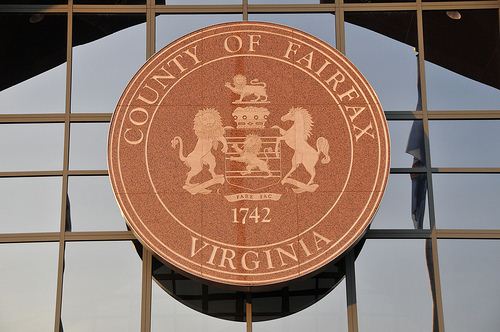 Today the Fairfax County Board of Supervisors were presented with County Executive Ed Long’s recommended 2014-2015 County Budget. The presentation was for discussion purposes and is far from a final decision. The largest uncertainty, and ultimately the biggest impact to the budget, remains the repercussions from sequestration to this area. These were anticipated within the document via slower growth rates for sales and real estate taxes. With these modified rates the County would ultimately face a significant multi-hundred million dollar deficit.
Today the Fairfax County Board of Supervisors were presented with County Executive Ed Long’s recommended 2014-2015 County Budget. The presentation was for discussion purposes and is far from a final decision. The largest uncertainty, and ultimately the biggest impact to the budget, remains the repercussions from sequestration to this area. These were anticipated within the document via slower growth rates for sales and real estate taxes. With these modified rates the County would ultimately face a significant multi-hundred million dollar deficit.
Sequestration cuts could still be avoided over the next 2 years, which would greatly reduce the impact to the County budget, if an agreement is reached. However, the County is, for now, moving forward with its analysis in order to take a conservative risk avoidance measure to assure that Fairfax remains a fiscally solvent jurisdiction and retains AAA bond ratings on its annual $3.5 billion budget.
Due to the slowed regional growth associated with Sequestration (2.77% for 2014 and 2.9% for 2015) it is anticipated that sales tax receipts will remain relatively flat, as well as commercial and real estate tax payments. Unfortunately, inflation and population growth will likely outpace revenue growth, and therefore the budget will require new sources of revenue and cuts to spending in order to meet its annual obligations.
Over the past 4 years Fairfax County has reduced $150 million in spending through government position reductions, stagnant capital spending on schools, and pay freezes for several years on public employees. 52.6% of the County’s budget goes directly to education ($1.89billion) and continued slow growth in capital expenditures will be necessary through the next two years, something that has some teachers and school officials worried about school over-crowding in some districts. Additional cost cutting measures include removal of 91 positions from the County Government, 79 of which are currently vacant anyways.
The biggest news, and likely the most controversial element of the budget concept, came from the proposal for a 2 cent per $100 assessed annual real estate tax increase. There was some confusion as to the impact in dollars this would have for the average home owner in the County. Originally it was stated that this 2 cent tax increase would equate to a $262 increase in payments, based on an average home price of $465,000. Actually, the 2 cent tax increase only equates $92 of that figure. The real anticipated increase in payments will be associated to the likely average assessment increase, based on current home sale trends, and will equate to $170 in tax payment.
In other words, even without a 2 cent tax increase, the average home owner can anticipate that their tax payment will rise $170. The tax increase is only an additional $92 if enacted for a home of $465,000.
Due to the clumsy discussion of this element it is almost assured that there will be public confusion. We hope that Fairfax County gets out ahead of the incorrect information and provides more clarification that this tax increase equates to less than $8 per month. Compare this to the likely increase in taxes created from the new Virginia transportation bill ($100 to 200 more annually for the typical NOVA resident) and you can see that it will likely be a digestible increase.
Sequestration of course is not an inevitability, and even after it is enacted it will not mean a sudden drop off in our areas economy. Most likely, over the next several months, components of the Federal bill will be stepped back as smaller compromises are met.
It remains unclear if Fairfax County will consider reducing the increase of the tax rate if Sequestration is ultimately avoided. More details will be developed over the next month and the public will have its first chance to weigh in April 9th through 11th in a series of open meetings.

